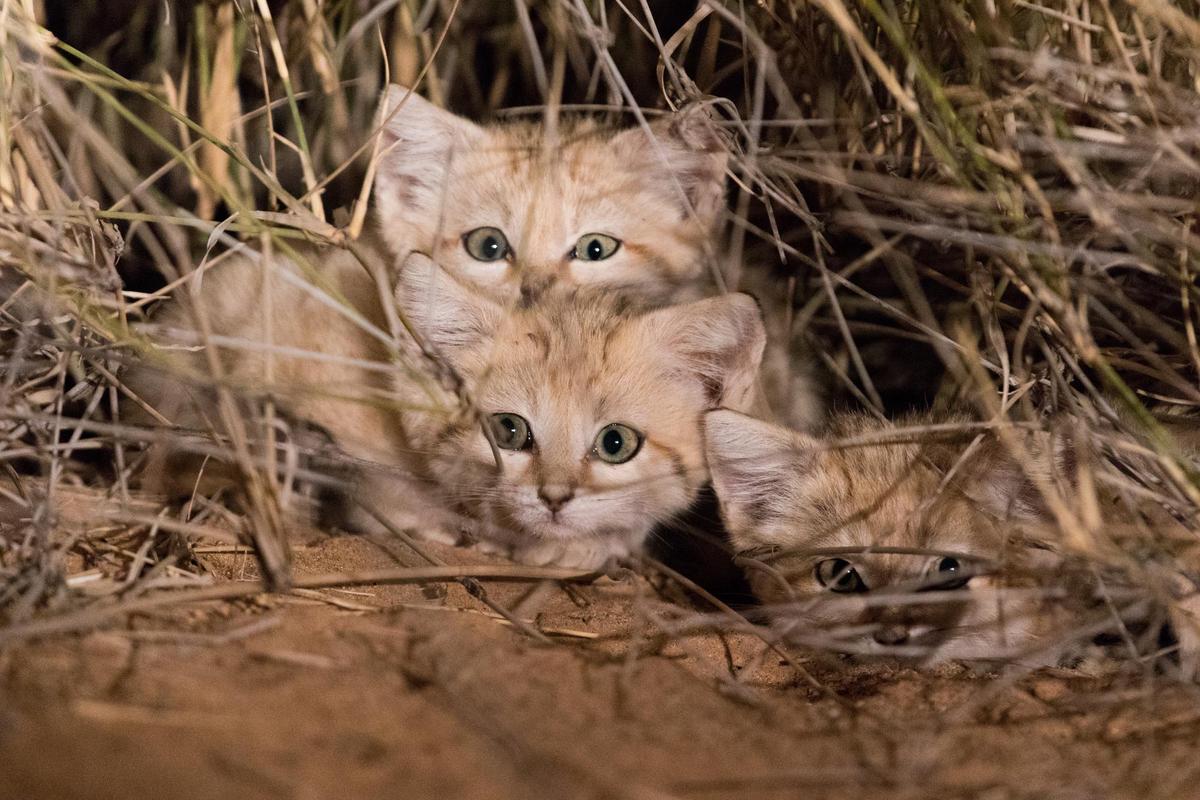A group of scientists and a veterinarian traveled to rural southern Morocco to study the ecology and home range of the nocturnal sand cat. By capturing and fitting 22 sand cats with VHF radio collars, researchers could intermittently observe the small cat’s movements from 2015-2019 in the scorching desert where temperatures reached 50 degrees Celsius (122F). This their story.
It was a dark night in rural southern Morocco. Scientists from Panthera and the Rabat and Cologne Zoos scanned the desert for the glowing eyes of the nocturnal sand cat, native to Africa’s Sahara Desert and the Arabian Peninsula. They hoped to collar as many as possible for a years-long study of this small cat’s ecology and home range.
What resulted was the most extensive research on the ecology of this species in the wild. The study, which appears in the March edition of the Journal of Arid Environments, provides the largest dataset on the home range of sand cats ever recorded. To date, this serves as only the third-ever telemetry study published on this elusive and little-known species and follows the first sighting and photos of wild sand cat kittens in Africa that went viral in 2017.
A team of five, including scientists and a veterinarian, captured and fitted 22 sand cats with VHF radio collars, intermittently following and observing them from 2015-2019 in the scorching desert where temperatures reached 50 degrees Celsius (122F).
Researchers found that sand cat ranges are much more extensive than previously thought; incredibly, they rival ranges of much larger cats like leopards and tigers, with one sand cat covering an area of up to 1,758 square kilometers (about 1,093 square miles) over 6.5 months. Scientists believe sand cats now likely maintain the largest range of cats of their Felis genus, including black-footed cats and African wildcats.
The study’s remarkable findings suggest that these small carnivores may not even rely on definite home ranges but instead prefer a somewhat nomadic lifestyle, shifting from one home to another based on environmental conditions like rainfall fluctuations. If true, this type of movement in response to rainfall is previously unrecorded among wild cat species.
The discovery of such large ranges for this cat has great conservation implications: current population estimates are likely inaccurate, with fewer sand cats roaming the wild than previously thought and not equally present in desert habitats. The sand cat is currently listed as ‘Least Concern’ by the International Union for the Conservation of Nature (IUCN). Still, given the new findings, scientists suggest that an upgrade in conservation status to ‘Near Threatened’ may be warranted.


